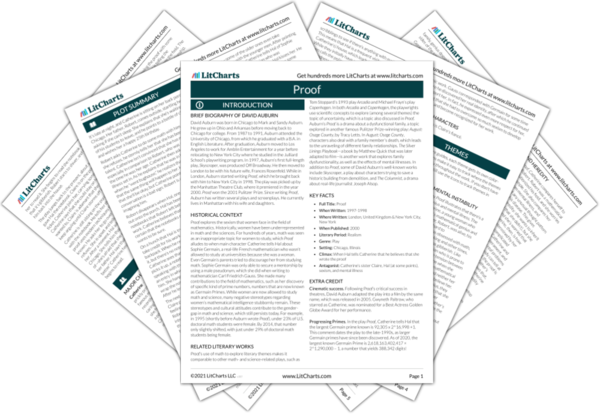Once again, genius is associated with perception. Catherine’s proof is a ground-breaking and historic proof; as Hal explained earlier in the play, mathematicians have been trying to prove Catherine’s mathematical theory for centuries, but no one ever managed to do it. Yet, for Catherine, writing the proof was simply a question of perception—as she tells Hal, writing the proof was like “connecting the dots.” The implication is that Catherine can see connections or patterns that others can’t. Significantly, this is similar to both her and her father’s mental illness. For both of them, they often perceived or imagined things that weren’t there. This is what makes it so difficult to distinguish their madness from their genius: in both cases, they are interpreting the world in a unique way. In fact, it is due to this exceptional perception that Catherine is able to write her innovative work. But Catherine doesn’t feel satisfied with her work yet—there are still points where it could be improved. At the end of the play, she makes a leap of faith in deciding to trust Hal again when she agrees to let him help her on her proof. Although he broke her trust before, Catherine is willing to give him another chance. Hal, eager to show her that she can count on him, assures her that he has confidence in her ability to improve it.
